Tek Sing Shipwreck Cargo
Discovery of the Tek Sing
In 1999, Captain Michael Hatcher—one of the world's most successful salvagers of shipwrecks—discovered the sunken remains of the Tek Sing ("True Star"). Hatcher had previously salvaged the Hatcher Collection from an unidentified Chinese junk and the Nanking Cargo from the Dutch ship Geldermalsen, which sank in 1752. Both cargoes were successfully auctioned in Europe in 1984 and 1986, respectively.
The Tek Sing was an unusually large Chinese junk, measuring approximately 50 meters long and 10 meters wide, with a displacement of around 1,000 tons. It set sail from Xiamen (Fujian Province) in January 1822, during the first year of the Qing Emperor Daoguang's reign, bound for Java. The ship carried more than 200 crew members and at least 1,600 passengers, most of whom were emigrants seeking work in Java’s sugarcane fields.
Tragedy struck in February 1822 when the Tek Sing hit a reef in the South China Sea near Belitung Island. Only 198 people survived the disaster, rescued two days later by Captain Pearl, an ex-navy officer, who was passing by with his ship, Indiana.
The Cargo
The bulk of the salvaged cargo—over 350,000 pieces—consisted of Chinese ceramics, primarily Fujian blue-and-white wares, including plates, bowls, covered boxes, and cups. A smaller quantity of brown-glazed vessels, likely from Fujian kilns, was also recovered. Notable ceramic finds included Yixing teapots and Jingdezhen blue-and-white infant figurines.
Other recovered items included:
- Mercury
- Sextants
- Pocket watches
- Chinese ink pads
- Iron and brass cannons (including one bronze cannon)
- Boxes containing needles and pocket knives
- Chinese brass padlocks
- Candlesticks and incense burners
- Telescope parts
- Coins
Fujian Blue-and-White Wares
The majority of blue-and-white ceramics were produced in Dehua kilns in Fujian. Dehua first gained prominence as an export production site for white/qingbai wares during the Northern Song Dynasty. In the late Ming and early Qing periods, Dehua became famous for its Blanc de Chine porcelain.
By the Qing Dynasty, however, Jingdezhen blue-and-white wares dominated the export market. In response, Dehua potters began producing blue-and-white ceramics, though their quality was inferior to those from Jingdezhen. Nevertheless, Dehua wares found a niche market, particularly in Southeast Asia.
Besides Dehua, other Fujian kilns, including those in Anxi (安溪), Hua’an (华安), Nanjing (南靖), and Yongchun (永春), also produced blue-and-white wares. These can be distinguished by their more grayish paste.
|
|
|
|
|
|
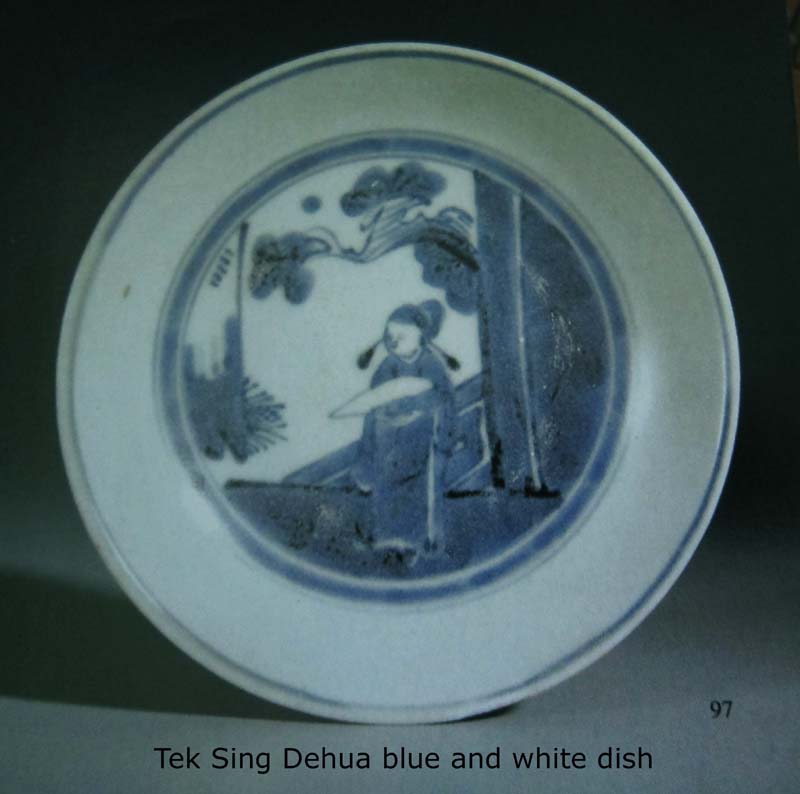 |
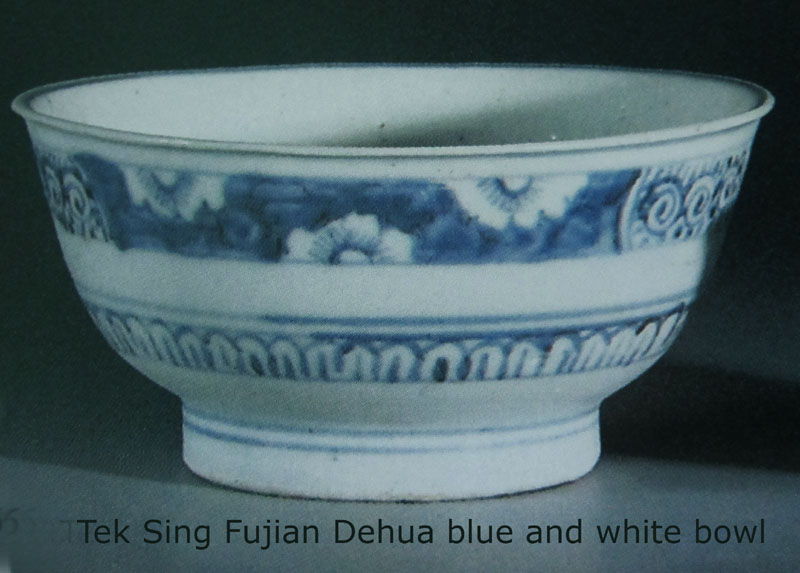 |
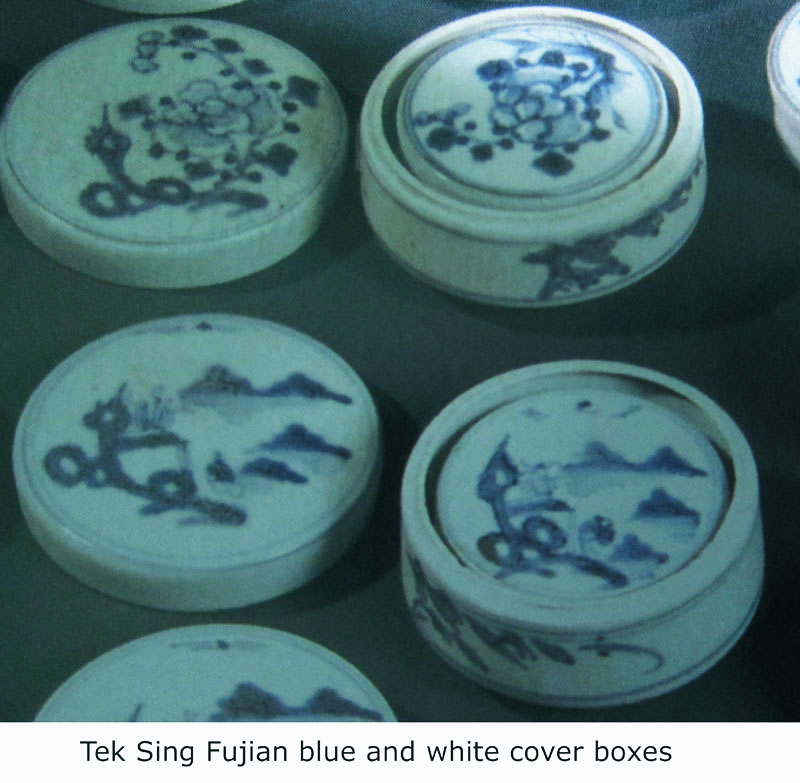 |
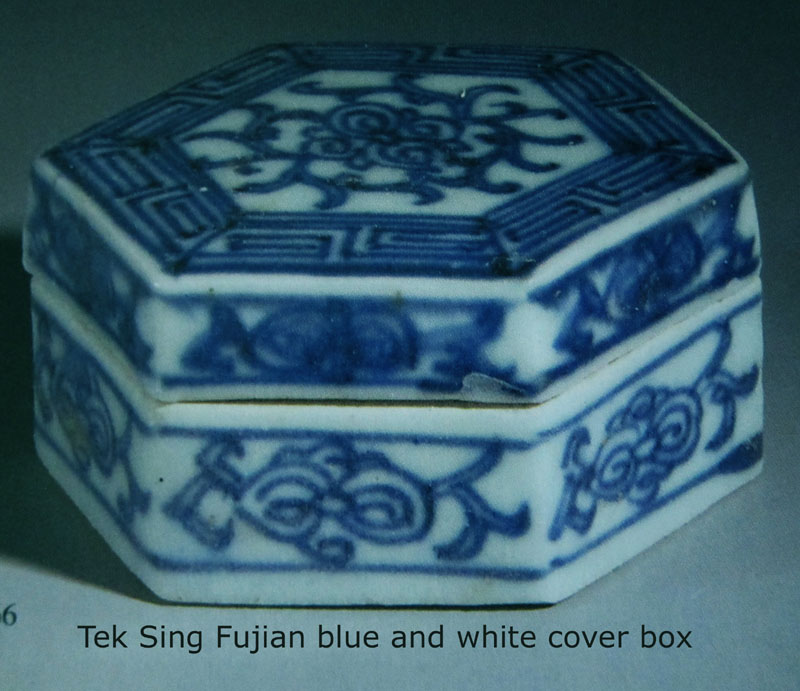 |
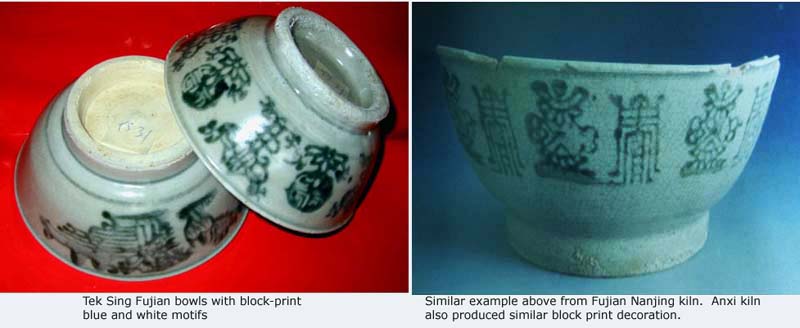 |
|
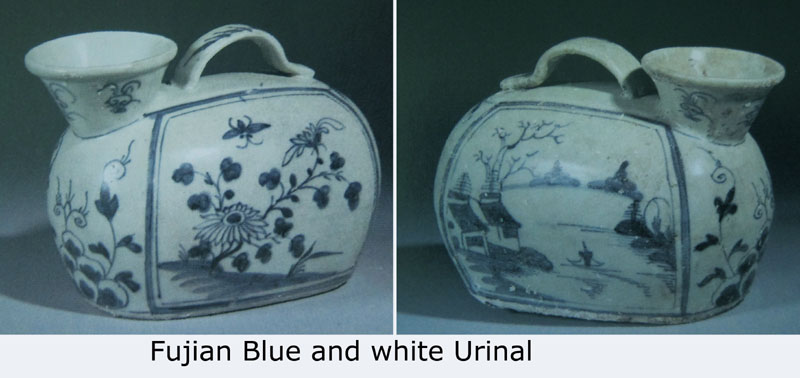 |
Blue and white Infant figurines likely produced in Dehua
Learn more about Dehua blue-and-white wares here.
Other Fujian Wares
- Light celadon vessels (e.g., incense burners, small vases), likely from Hua’an (华安) kilns.
- Green lead-glazed dishes (most with degraded glaze appearing blackish), similar to those from Nanjing (南靖) kilns.
- White monochrome-glazed wares and overglaze enameled ceramics, also from Fujian.
- Brown-glazed utilitarian vessels from Fujian kilns.
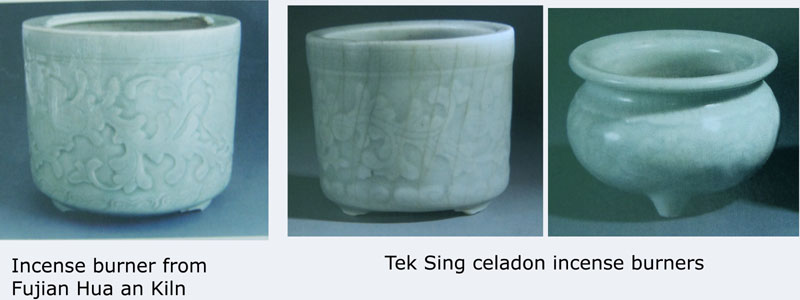
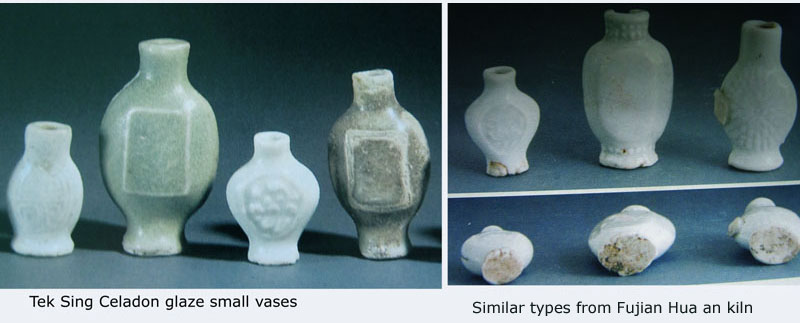

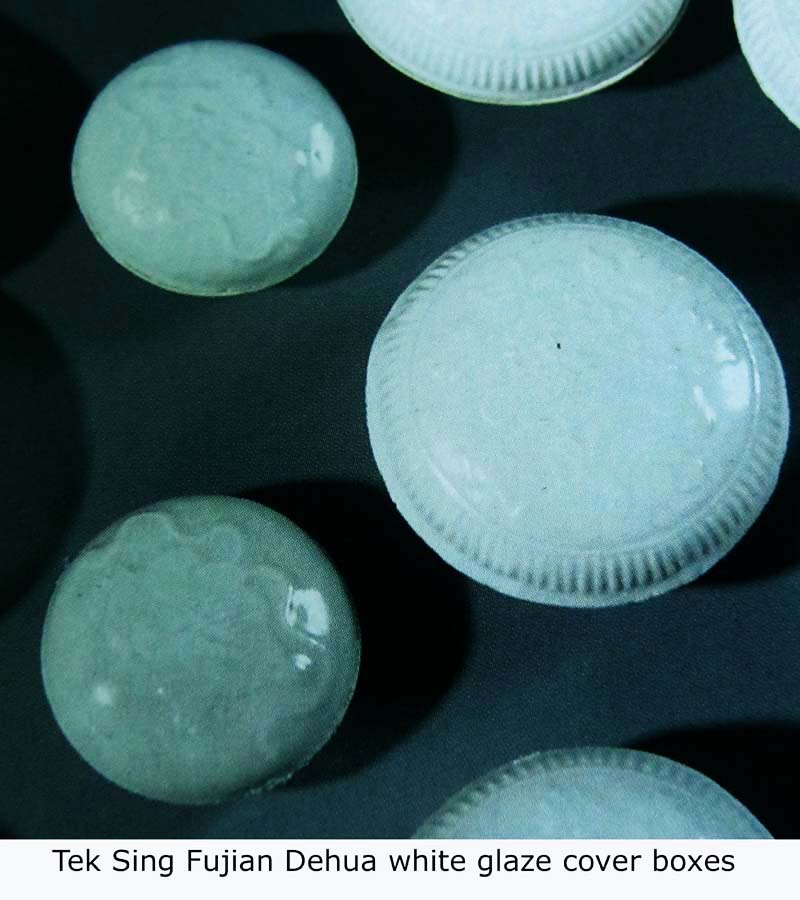
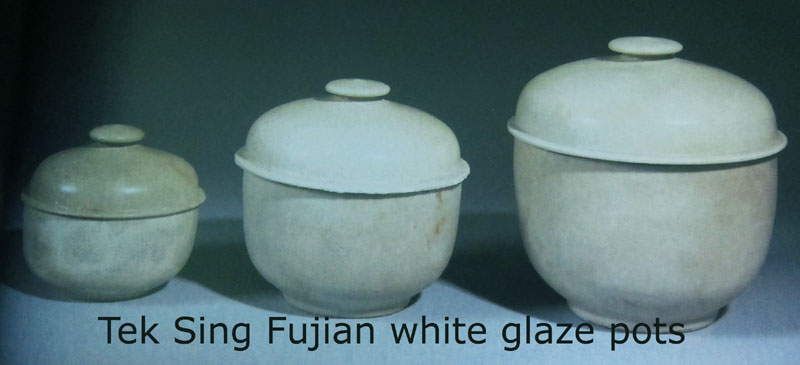
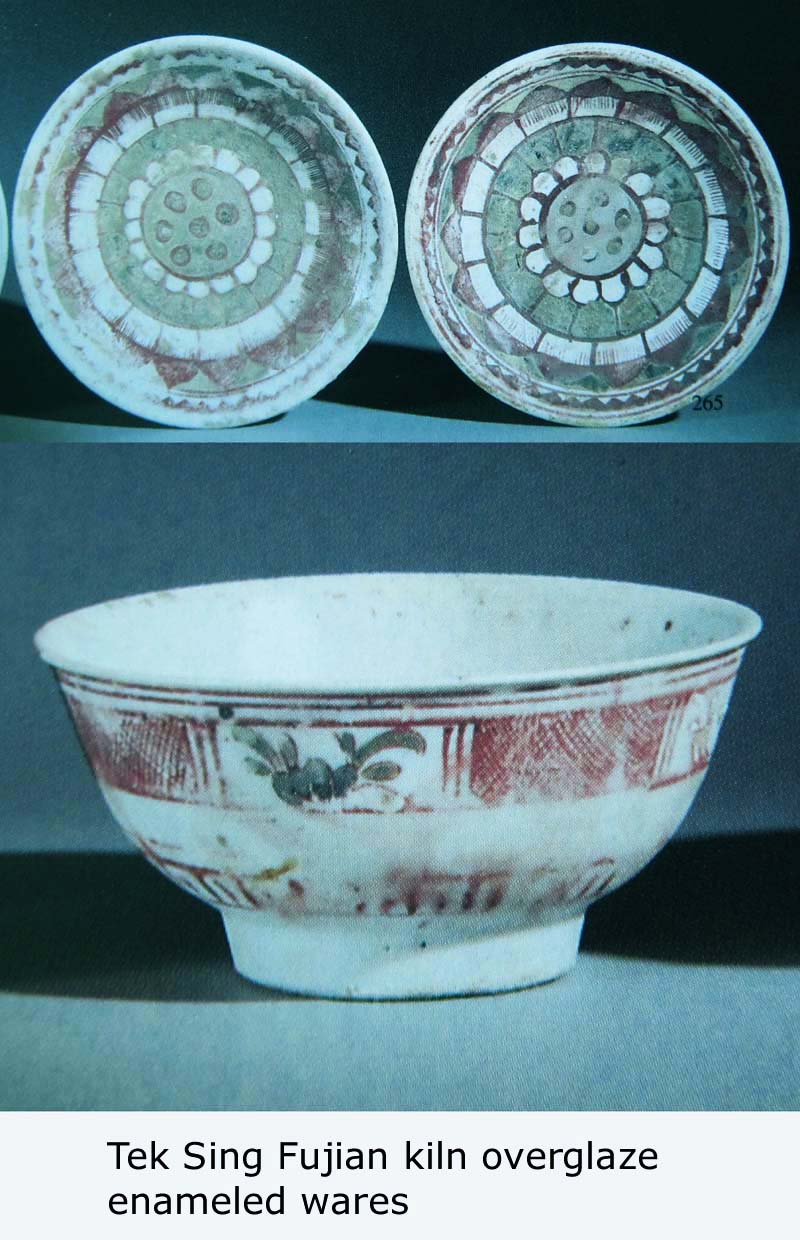
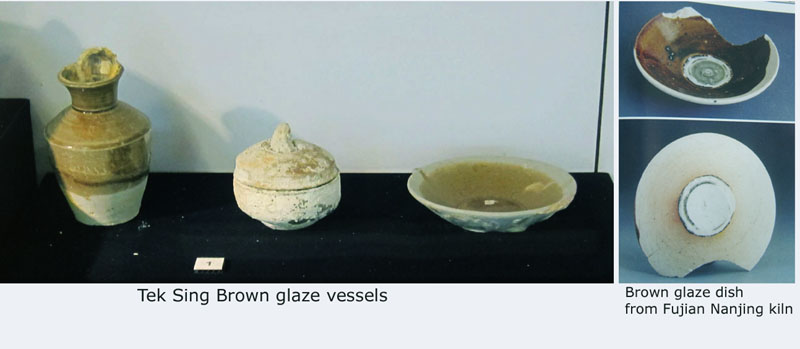

Non-Fujian Ceramic Wares
Among the non-Fujian ceramics recovered:
- Yixing teapots, from Jiangsu’s Yixing kilns.
- Brown-painted human and bird figurines, possibly from Fujian or Guangdong kilns.
- Lead-glazed cockerel figurines, possibly from Fujian or Guangdong.
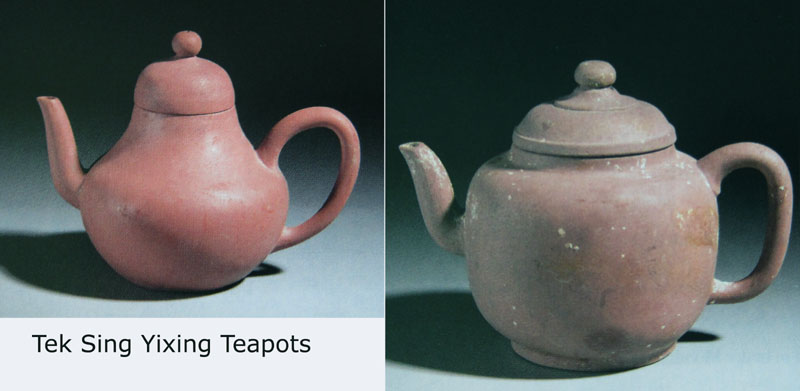
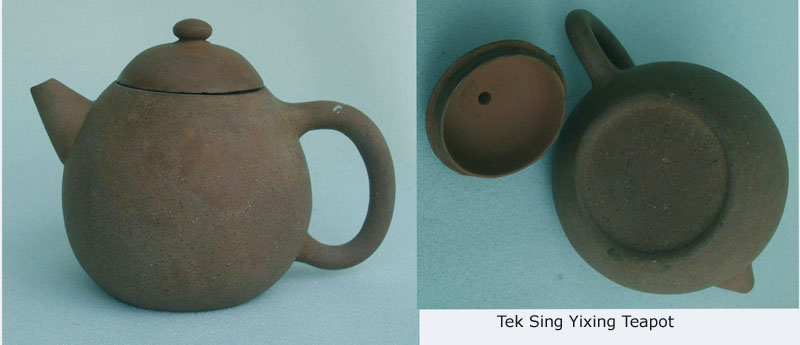
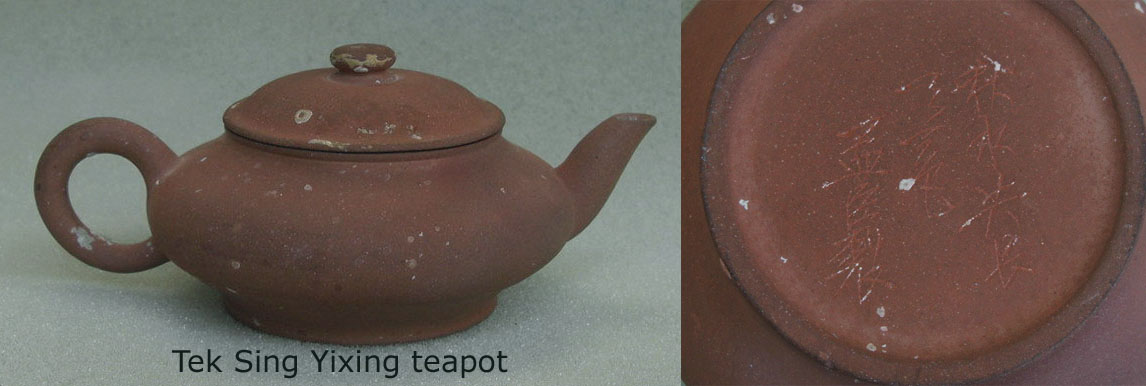
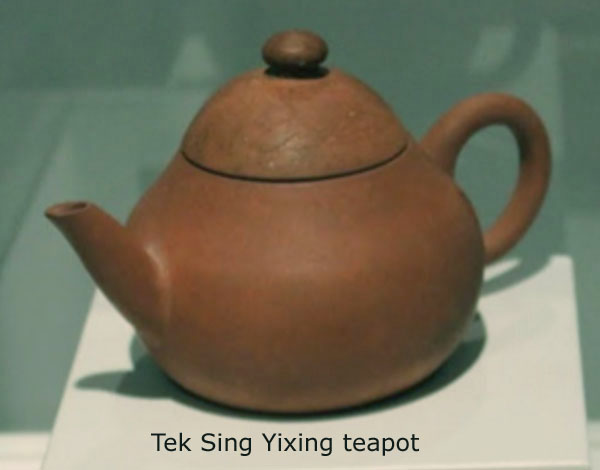
Brown painted figurines of bird
Yellow lead glaze figurines of cockerel
Display of Tek Sing Artefacts at the National Museum of Indonesia
Exhibits include:
- Fujian blue-and-white ceramics, mainly from Dehua kilns.
- Brown-glazed vessels, likely of Fujian origin.
- Small figurines and vases, possibly from Fujian or Guangdong kilns.
|
|
|
|
|
|
|
|
|
|
|
|
|
|
|
|
|
|
| Fujian blue and white, mainly from Dehua kiln |
|
|
|
|
|
|
|
|
|
|
| Brown glaze vessels which are likely also of Fujian origin |
|
|
|
|
| Small figurines/small vases likely from Fujian/Guangdong kilns |
Concluding Remarks
The Tek Sing shipwreck is a significant find for the study of Chinese trade ceramics. The large quantity of Fujian trade ceramics provides valuable insights into the role of Fujian kilns during this period.
By the Daoguang era, Jingdezhen porcelain quality had declined, and the American market had become its primary focus. Meanwhile, Fujian ceramics—led by Dehua—gained a strong foothold in Southeast Asia. From personal travels in Vietnam, Dehua blue-and-white wares are still commonly found in antique markets, indicating their historical popularity.
Recent archaeological surveys confirm that Dehua was the leading blue-and-white ceramic producer in Fujian during the Qing Dynasty. Similar wares were also produced in Anxi, Yongchun, Nanjing, and Hua’an, with Dehua’s influence extending as far as Raoping (饶平) in present-day Chaozhou. Historical records even document Dehua potters migrating northward to establish kilns in Minbei (Northern Fujian), such as Guangze (光泽).
Watch a video of Tek Sing artefacts at the National Museum of Indonesia.
Written by: NK Koh | 15 Jun 2016, updated: 4 Mar 2025